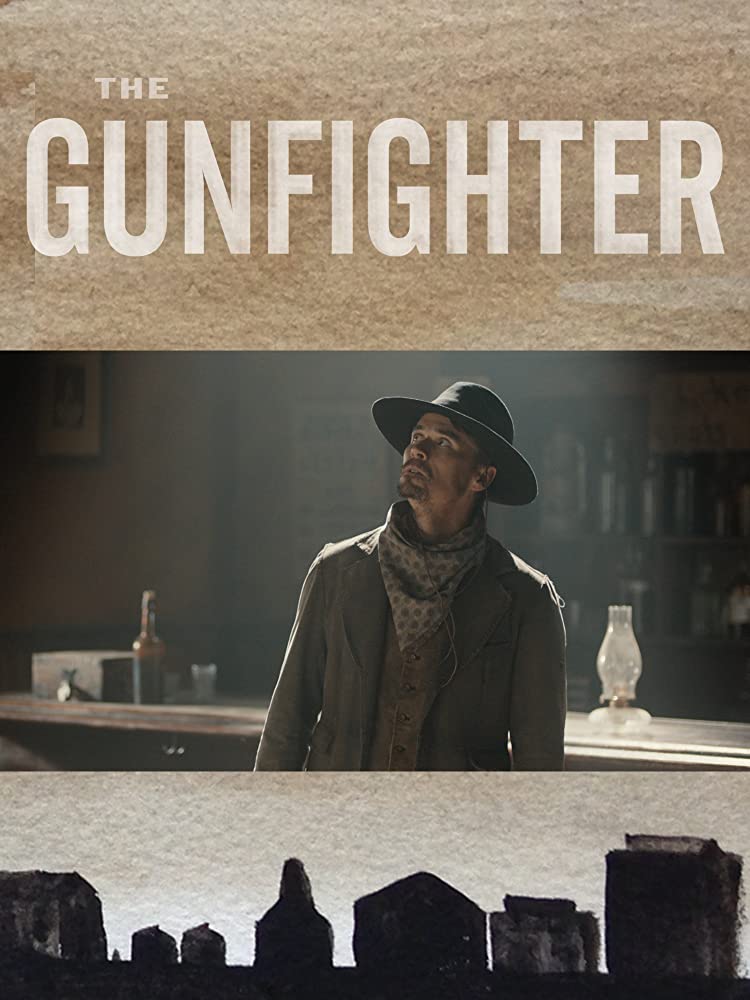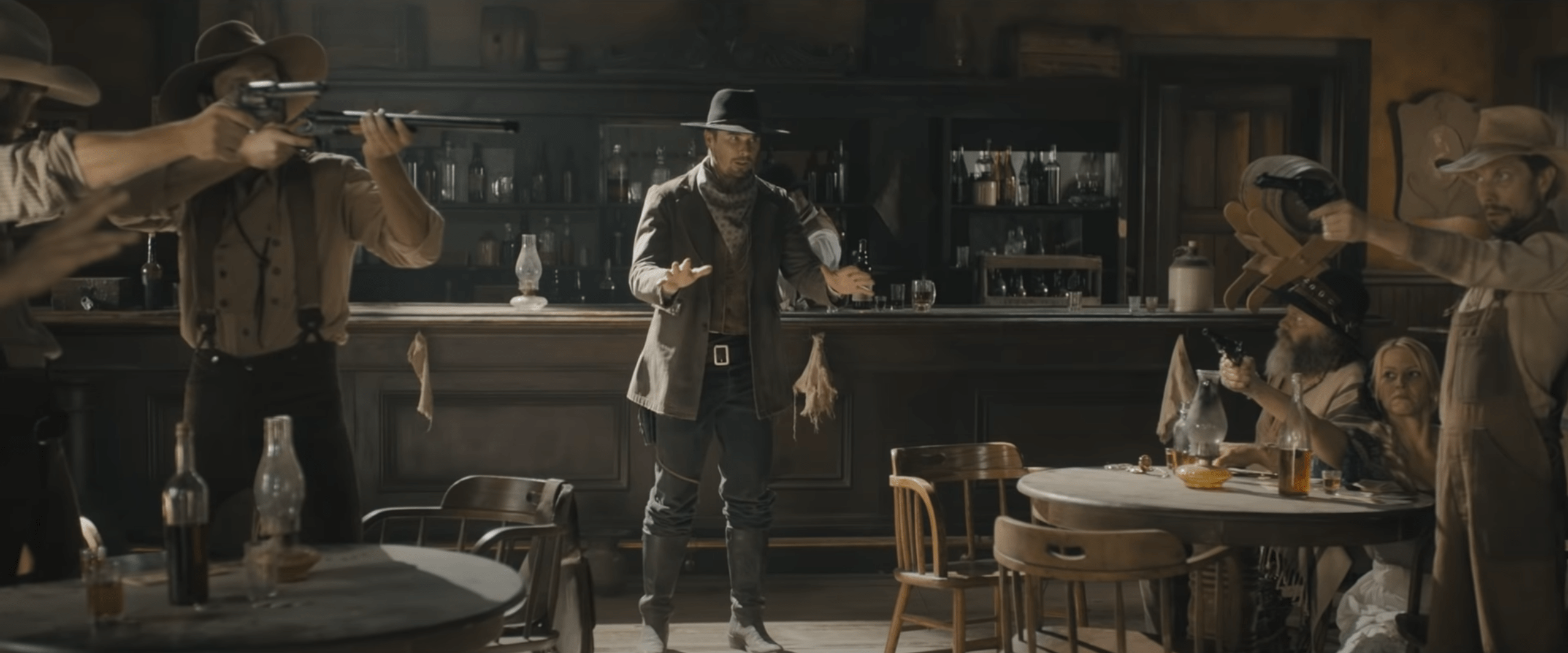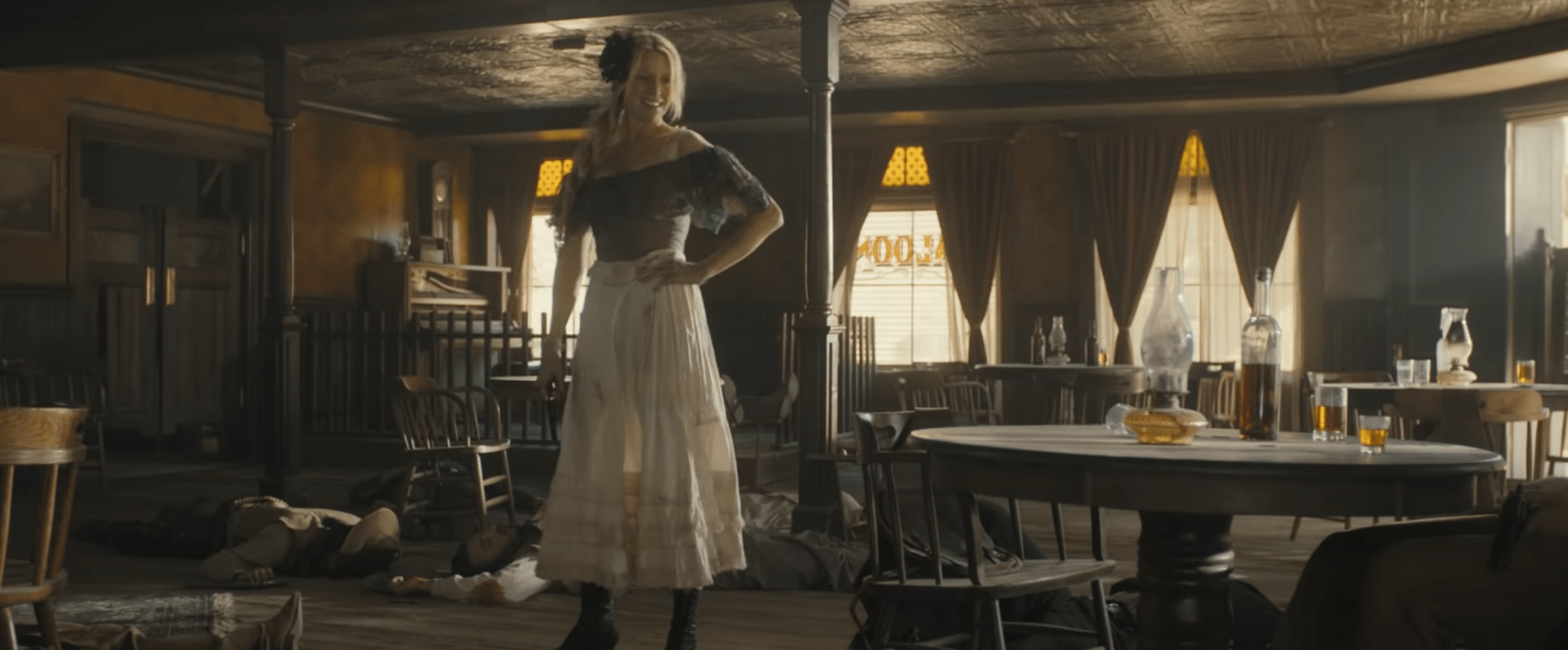
Narrative Structure
In this film, a lone gunfighter in the west walks into a bar where the voice of a narrator that categorises a typical western film narrates his every action and thought and those of the people already inside the bar, causing chaos as each person has secrets revealed that results in a bloodbath where only one person is left standing.
Genre
The film genres that this film fits into would be Western, Comedy and Action

Cinematography
There are some uses of noteworthy cinematography splattered throughout the film, one of which would be the actual splatter of blood as they get shot in the head. It’s a creative and effective way of showing someone being shot which adds an element of gore to an otherwise humorous film to remind the audience that despite the comedic nature of the film, people are still being shot and dying brutally.
Whilst the lighting allows for a vibrant and clear setting, its used largely for the gunfighter when he is giving his speech near the end to create a spotlight appearance from the gaps in the saloon window that makes him stand out in the scene and depicts him as the hero to save them from the narrator.
Sound
The diegetic sound in this film is mostly generic with the sound of boots, bullets and glasses made prominent in the sound mix as they add to the realistic setting of the film.
Music is used for dramatic and comedic effect both at the start, middle and end of the film. As the gunfighter walks into the saloon, music builds suspense of the approaching man which is only cut short by the realisation that everyone can hear the narration, thereby removing the suspense and adding intrigue. When they are about to shoot each other, the woman describes the music as ‘ominous’, breaking the fourth wall in order to encourage the people in the saloon to shoot each other whilst finally ta the end, when everyone except her is dead, the music begins to play again, signalling to the audience that the film is drawing to a close.

Editing
I like the editing in this film, there’s nothing unique about it but it is quick and sharp, often utilising a lot of shot reverse shots which focus on the characters reaction closely, allowing for more comedic effect
Mise-en-scene
Mise-en-scene is one of the major stand outs in this film with the costume design, props and the saloon setting allowing an authentic look for the film and its western setting which submerses the audience in the film, contributing to the other film forms such as cinematography and performance.
Performance
Performance is another major stand out for myself. The southern American accents that the actors adopt does a brilliant job of adding to the authenticity of the film whilst Nick Offerman’s voice contribution as the narrator provides a smooth narration that might be expected from a silent psychopathic narrator that initially doesn’t sound harmful and therefore his bloodthirsty narration seems all the more haunting and believable when everyone character can hear it.
Southern American accents, nick offerman provides a smooth narration expected from that of a narrator which doesn’t sound harmful and so his bloodthirsty narration seems all the more harmful when everyone can hear it

Meaning and Response
What I take away from this film is the implication that secrets can be deadly and can ruin relationships (less likely to kill you but still possible!). If we weren’t able to keep our secrets it could cause destruction on society. Deep down we know that we have secrets that we would never share with anyone and yet we always claim that we don’t so releasing these secrets could have massive implications and expose the most corrupt of people.
Contexts of Film
There are several references to groups of people during the time of the west that were treated differently due to them being a woman, gay, Asian and black, all of which are made reference to in the film and used for comedic effect, pointing out these flaws in the old western society.